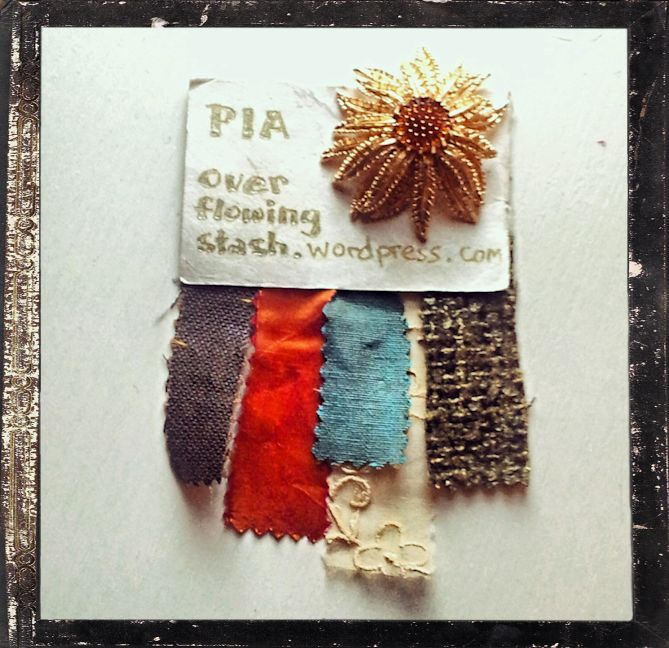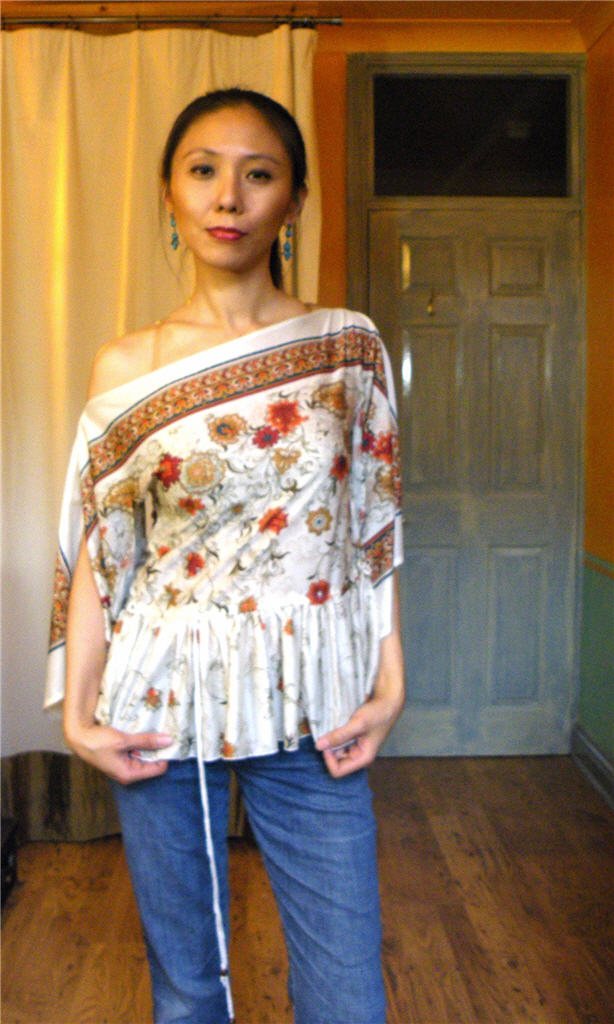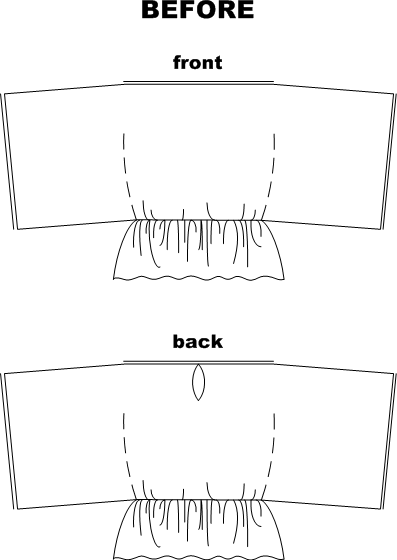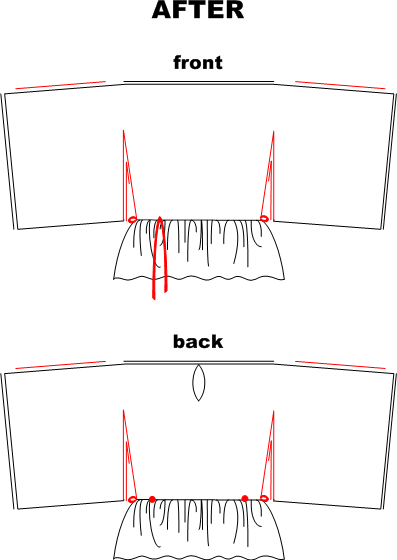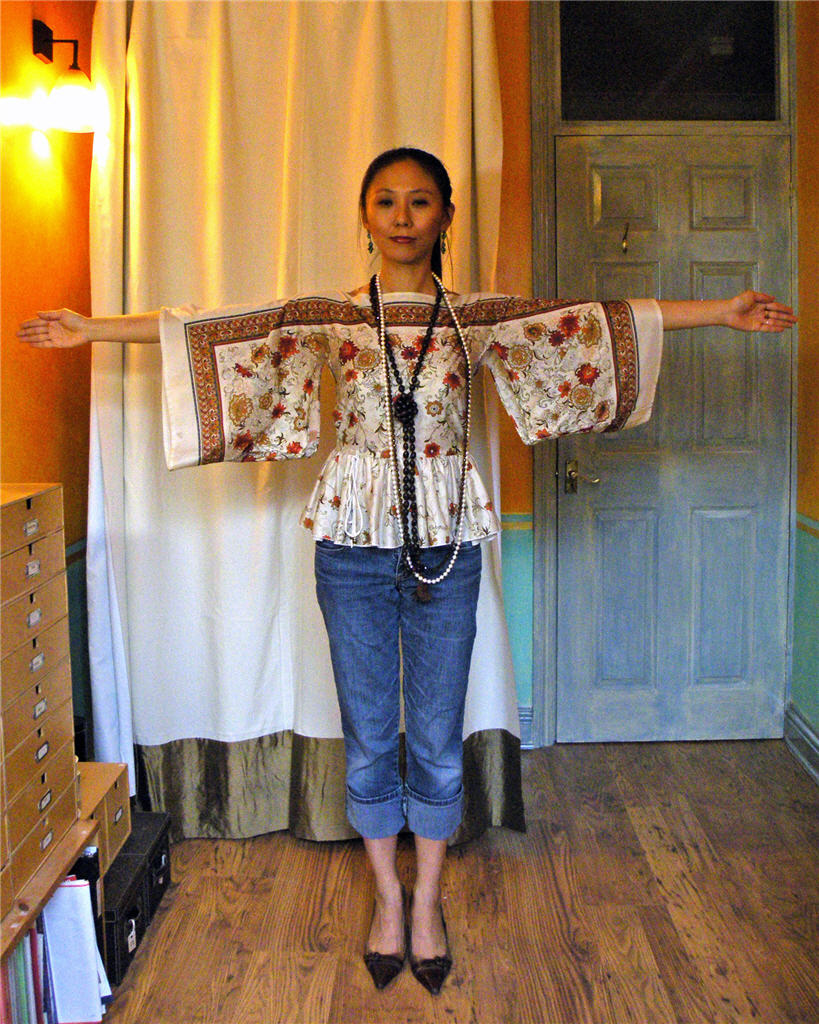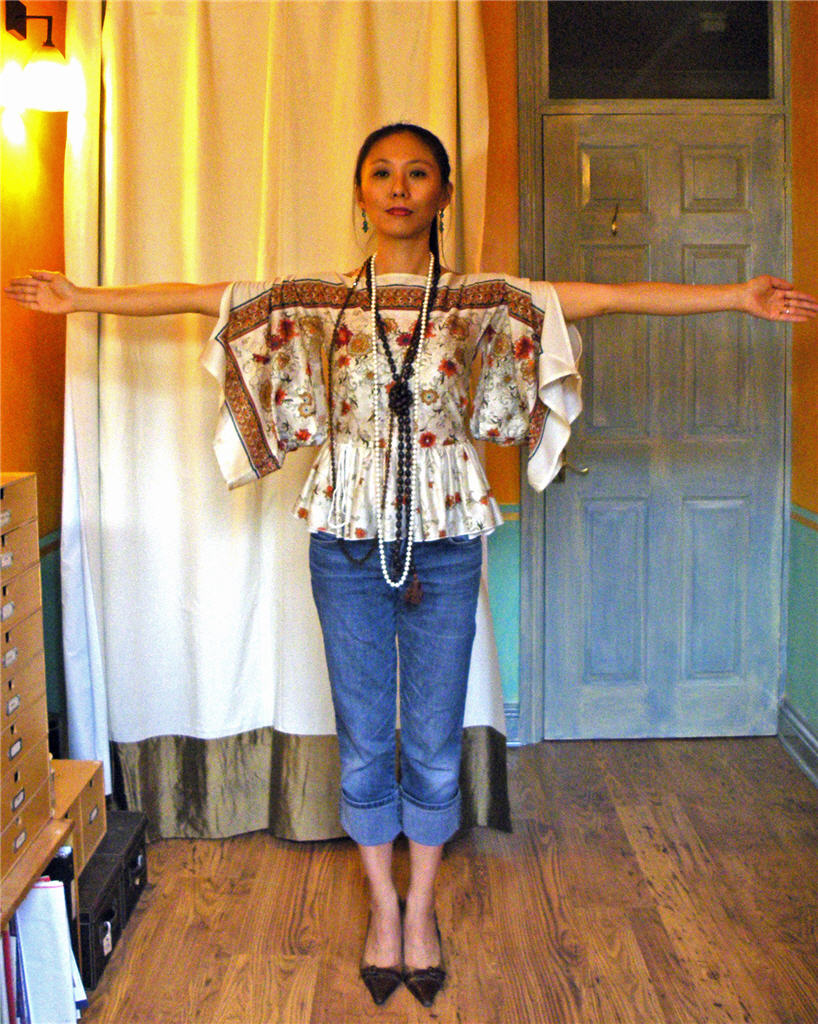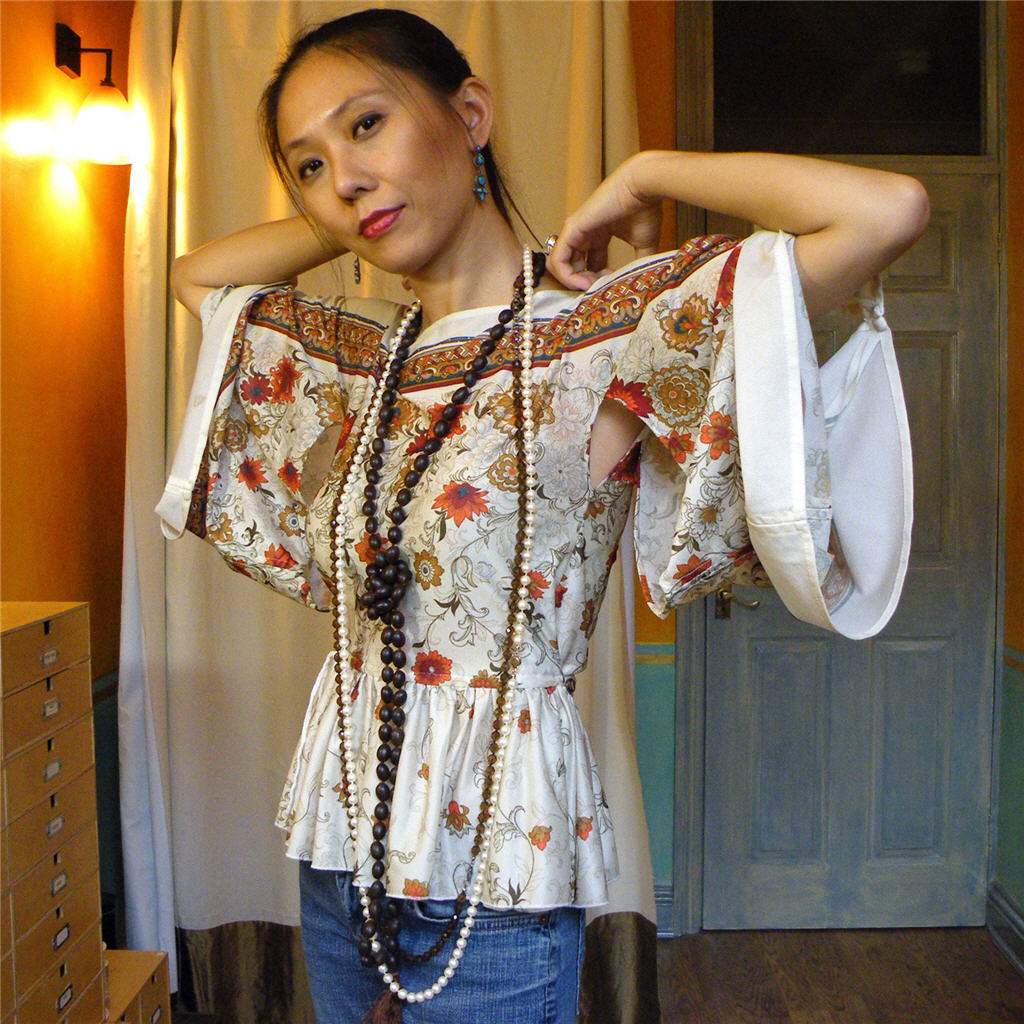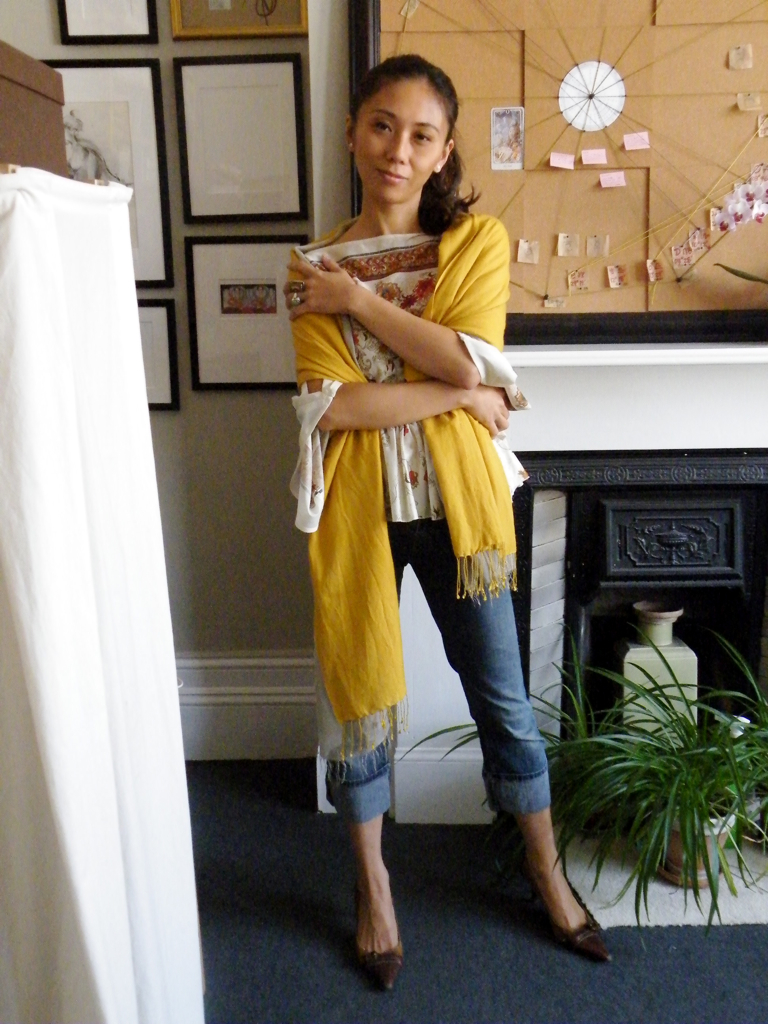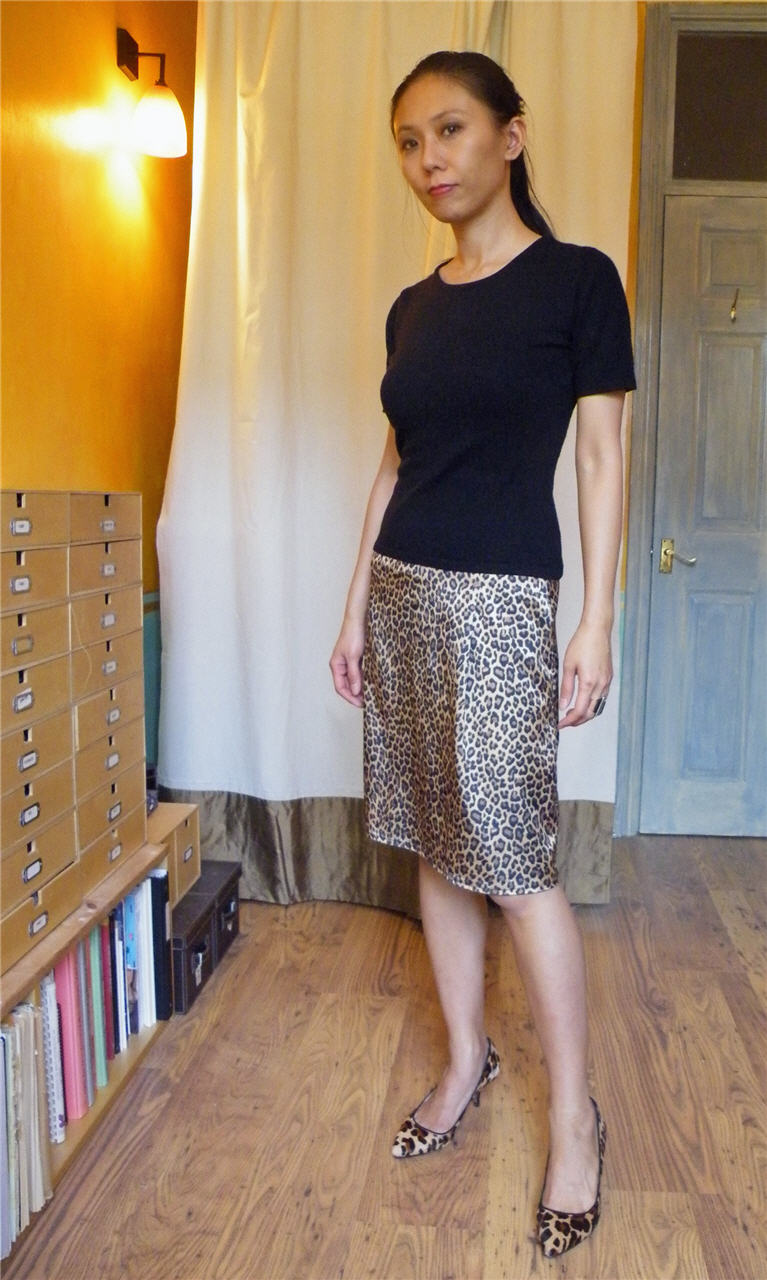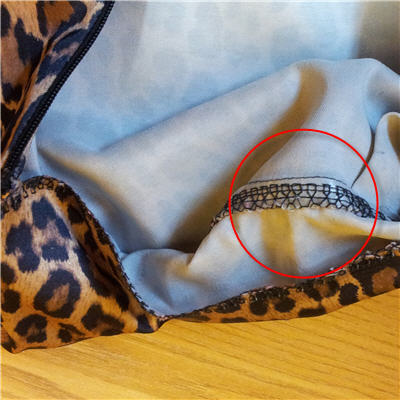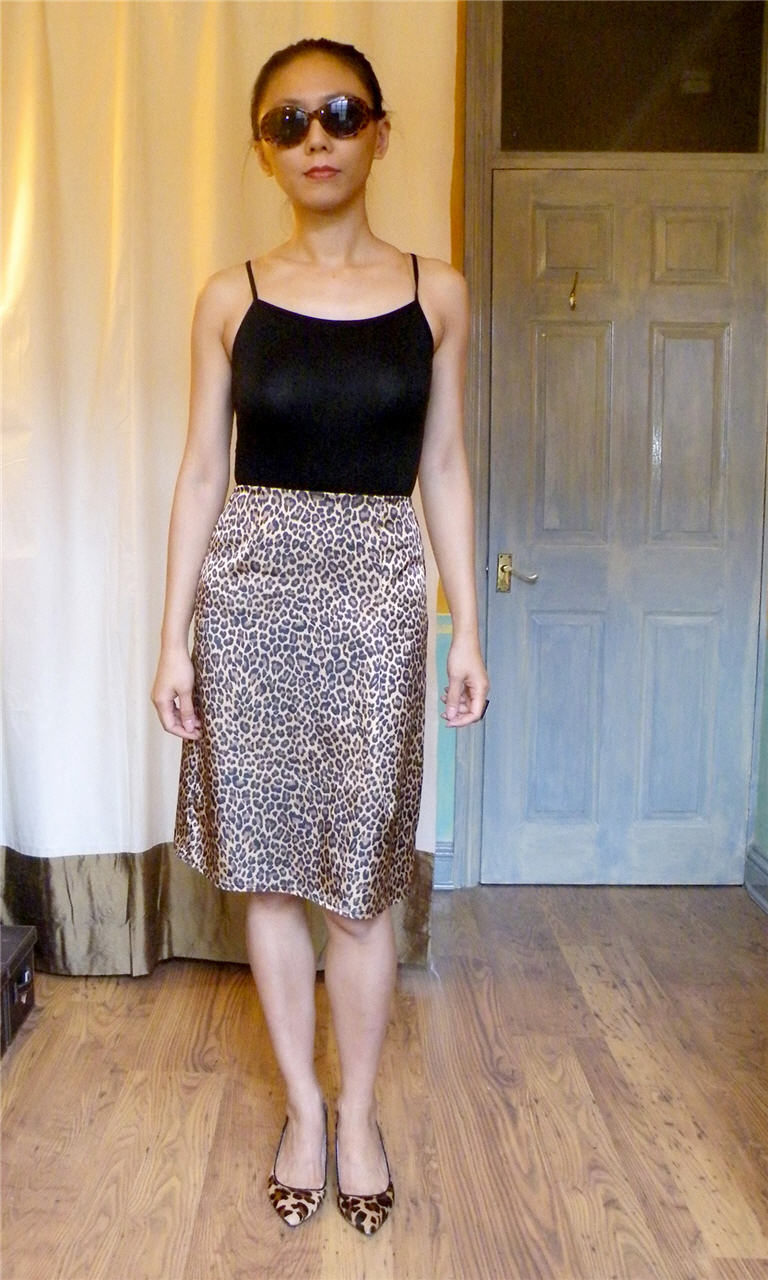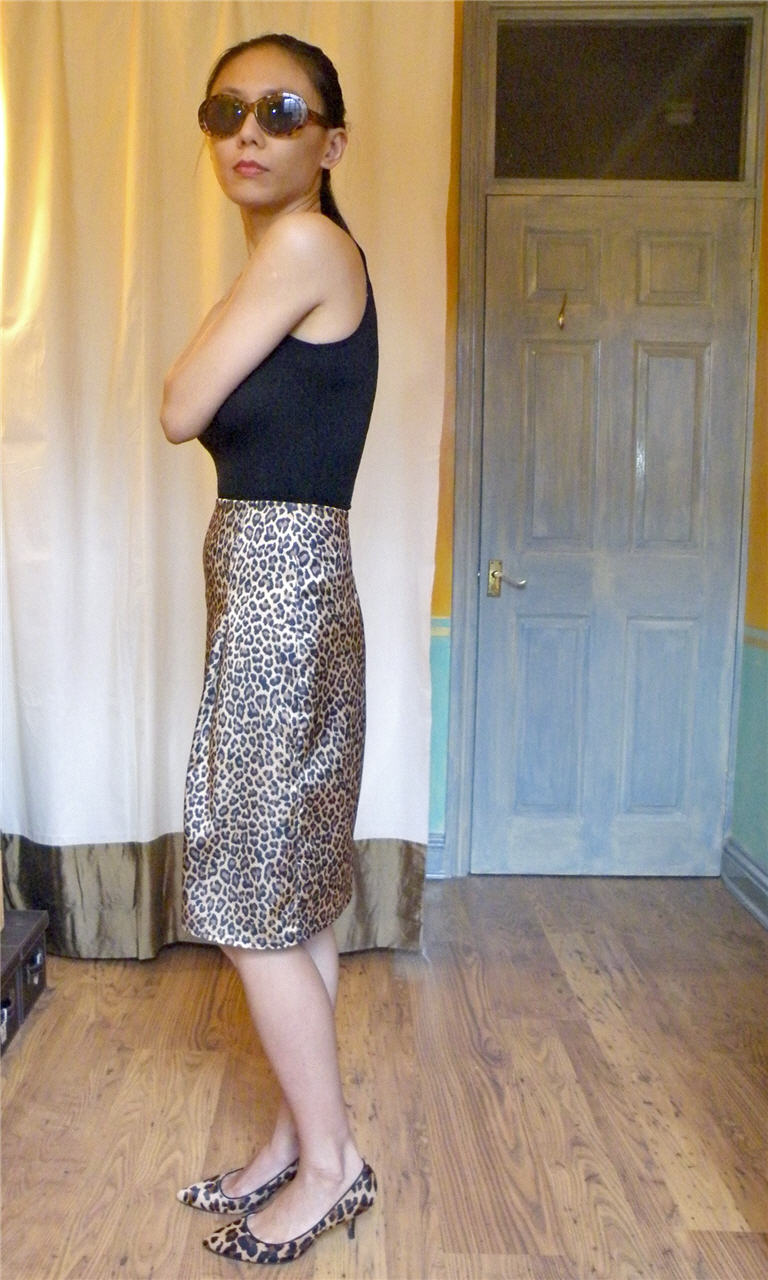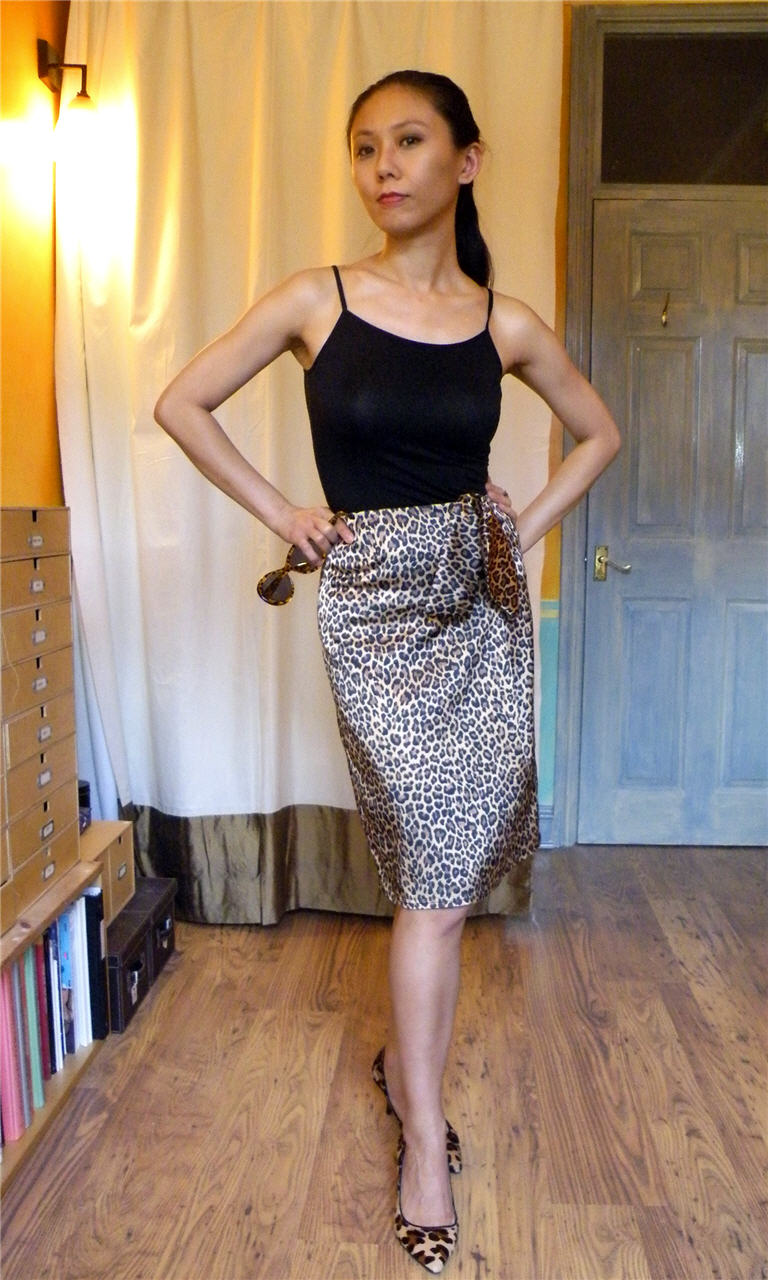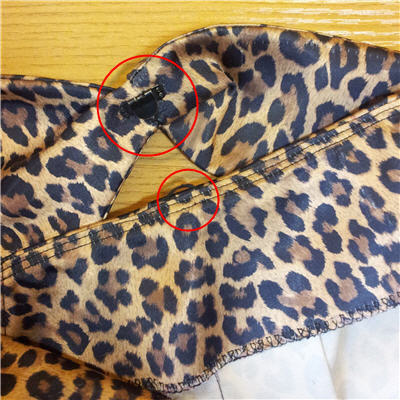OK, last one in my current batch of 3 to write up.
This one started out as Muslin no. 2 for my Burda 2012-09-123, aka T-Shirt Block. It was a wearable muslin, but with a not very flattering over-stuffed sausage look. So as planned, I cut a new front with more drape, and reused the back and sleeves. Plus old front became the facings.
The Pattern
Cool photo. I was seduced. And the back & sleeve again look basic enough to re-purpose my wearable muslin. The front drape I thought would work much better for this thin and drapy fabric.
Style Shots & Mug Shots
Fabric & Notions Used
- Cerise 4 way Stretch Soft Touch Lycra Jersey from Tissu Fabrics.
- MaxiLock serger thread. Vilene Bias Tape.
Size Used
Another one graded down to a size 34, ignoring standard instruction for a 38.
Changes Made
Fitting changes
I’m still experimenting with pattern-to-Block comparison as a quicker way to make fitting changes. So don’t quote me on what I’m doing – I’m fumbling. So far it hasn’t worked out too badly for me yet. But it’s early days. And there are probably better, more logical ways to do this that I have yet to discover.
OK, let’s start with the back since it’s much more straight forward. Sort of.
- I took the easiest way out, the least change option by aligning the pattern & Block at the underarm level. The above waist side seam then almost match exactly. So all I had to do was to trace the new shoulder seam and lower part of the armscye.
- I then moved the pattern up until the below waist side seam almost match exactly & make a note of how much I had to move up.
- That amount is then overlapped at the waist line.
Next the front. Not so easy. In fact it’s all a blur. I’d call it Black Magic, except the result wasn’t exactly magical. This is what I can piece together afterward.
- I start with the easy part – the front facing. Again aligning at underarm level and CF. In this case size 36 came closer in width. So I use that as guide & marked out new shoulder seam & side seam.
- I think for the actual front I just overlapped the same length at the waist level as on the back.Smoothed the side seam at the waist. Then matched the front & back side seam from the hem up & marked the waist level on the front.
- Next compared the front side seam from waist level up against the Block, grading out to size 36 at the underarm level so the CF would align & the front wide enough at bust.
- Finally, pivot & slide on the underarm point so the armscye align again with the original pattern & CF is still aligned (wide enough). Marked the new shoulder seam and called it done!
Design changes
 I extended the CF drape’s cut on facing a bit because the short stub I see on other people’s versions looks a bit untidy to me.
I extended the CF drape’s cut on facing a bit because the short stub I see on other people’s versions looks a bit untidy to me.
- I extended the facing length as well, originally intending to try adding a built-in shelf-bra that I see in a few of my Victoria’s Secret t-shirts / dresses.
 The shelf-bra didn’t work out because my fabric was too thin, so every bump shows. In retrospect I should have extended the facing all the way down to the waist where the extra drape in the front means a looser fit, so bumps less likely to show through.
The shelf-bra didn’t work out because my fabric was too thin, so every bump shows. In retrospect I should have extended the facing all the way down to the waist where the extra drape in the front means a looser fit, so bumps less likely to show through.
Verdict on the Instruction
Appalling. I did read the instruction because of the more complicated design details. And I did eventually made sense of it. But I’d highly recommend you check out these blogs for photo-illustrated instruction: netcheria.over-blog.com (in French), The Couture Academic, SMF Designs & Friends.
Again, I deviated in places to suit my experiments. So here’s what I did:
- Front details prepared per instruction.
- I chose not to interface the entire facing. In stead, I stabilized only the shoulder & neckline with Vilene Bias Tape. Sewed shoulder seam. Overlocked hems.
- Sewed facing to bodice at neckline per instruction. Almost. See Oops & Improvement A below…
- Finish off the front drape per instruction. Almost. See Oops & Improvement B & C below.
- Sewed sleeves to bodice with facing handled like underlining.
- Sewed sleeves & side seams with facing handled like underlining. See Oops & Improvement D below.
- Finished sleeve & bodice hem with stretch seam.
Oops & Improvements
 I made a boo-boo during cutting and end up with a gash right by the neckline in the shoulder area. As the front takes up a bit of fabric, and I’m still not 100% sold on this color, I decided not to recut a new front. Instead I tried patching the gash with a bit of iron-on interfacing on the wrong side, and top-stitching along the neckline for reinforcement. It’s good enough for yet another “Wearable Muslin”!
I made a boo-boo during cutting and end up with a gash right by the neckline in the shoulder area. As the front takes up a bit of fabric, and I’m still not 100% sold on this color, I decided not to recut a new front. Instead I tried patching the gash with a bit of iron-on interfacing on the wrong side, and top-stitching along the neckline for reinforcement. It’s good enough for yet another “Wearable Muslin”! Some of the Pattern Reviewers mentioned that the heavy drape has a tendency to pull the facing to the outside. So I top-stitch the front bust seam to the facing to prevent the facing from shifting – see photo showing the stitching from the facing side. I think the extended facing and drape fold-over bit also help. I don’t have the same facing flopping out problem in my finished top.
Some of the Pattern Reviewers mentioned that the heavy drape has a tendency to pull the facing to the outside. So I top-stitch the front bust seam to the facing to prevent the facing from shifting – see photo showing the stitching from the facing side. I think the extended facing and drape fold-over bit also help. I don’t have the same facing flopping out problem in my finished top.- What didn’t work out so well is my attempt to control the hang of the drape. I wanted the drape to be more dramatic. So I tried stitched down pleats instead of gathering at the fold-line.



But the stitching was too visible in the finished result. Plus the way I overlocked the end and folded over the neckline meant the drape wasn’t hanging smoothly. So I had to unpick the pleat stitching. But I did learn from the process that irregular pleats – just bunching things up – gives me a nicer, more natural looking drape than regular pleating or gathering. In fact, I wish I had done the same with the bust gathering. Standard gathering just produce an unflattering big puffy mono-boob look.  The shelf-bra Oops. Well, this might not have been an Oops if I had used a more substantial fabric. The shelf bra idea is basically facing that goes down to your underbust with elastic sewn to the bottom edge so it forms a nice extra support for your girls. I had to take the elastic out. But the longer facing that’s sewn into the armscye and side seam does help support or counter-act the weight of the front drape nicely.
The shelf-bra Oops. Well, this might not have been an Oops if I had used a more substantial fabric. The shelf bra idea is basically facing that goes down to your underbust with elastic sewn to the bottom edge so it forms a nice extra support for your girls. I had to take the elastic out. But the longer facing that’s sewn into the armscye and side seam does help support or counter-act the weight of the front drape nicely.
Would I sew it again / Would I recommend it to others
After all that I have to say I’m a bit Meh with the result. It’s partly the color. That one styling shown above was about the only combination that I could come up with. Nothing else in my wardrobe want to play nicely with this color and shape.
The mono-boob look also is a bit disturbing. Fine on younger, flatter busts. No so fine on my short-waisted torso with “maturing” girls. Maybe irregular pleats instead of gathering would help. Maybe a lower, deeper V-neckline might also deflate the melons a bit.
So learn from my mistakes. And if you are a perennial jean wearer by all means go for this. There are definitely other makes of this pattern out there that look really flattering on their owners.
In the meanwhile I’ll be wearing this around the house as one of my growing pile of slob-out wearable muslins!
Now back into the rabbit hole for my next batch. I think I should give myself a break from complicated pattern fitting puzzles and whip up a batch of easy T-shirts now that I have a TNT T-shirt Block. What do you think?
